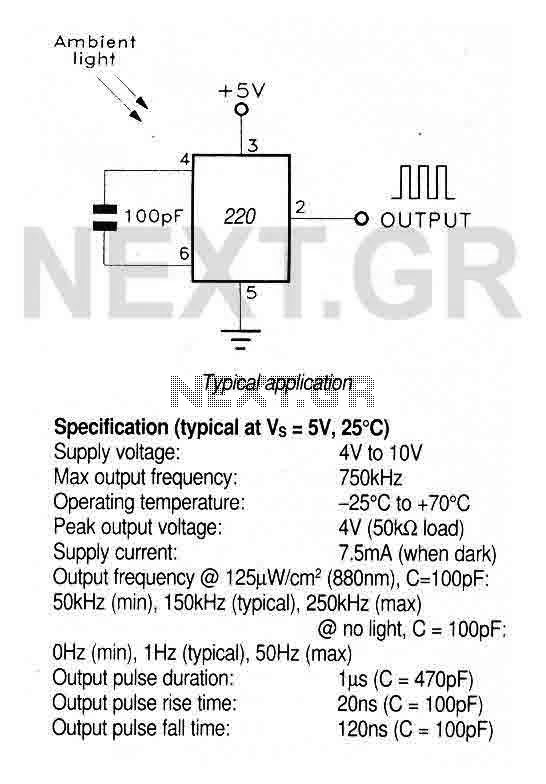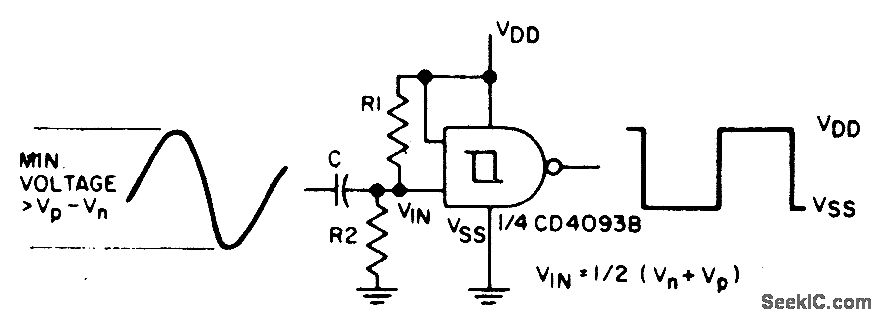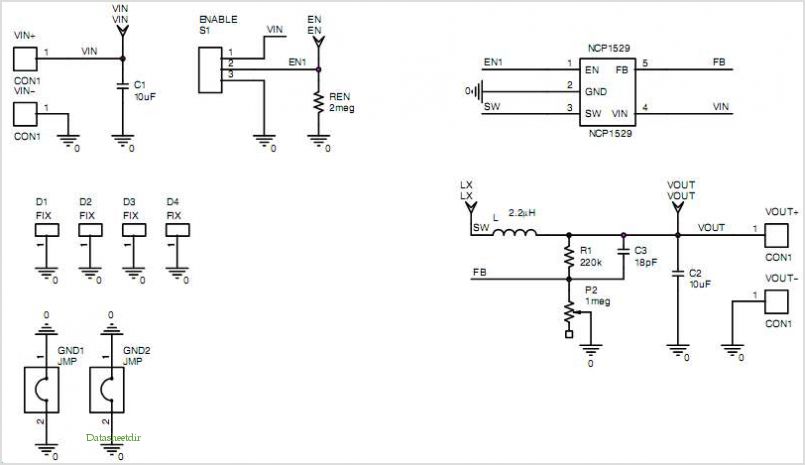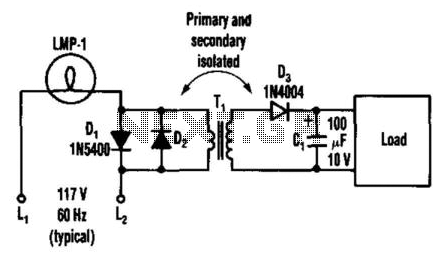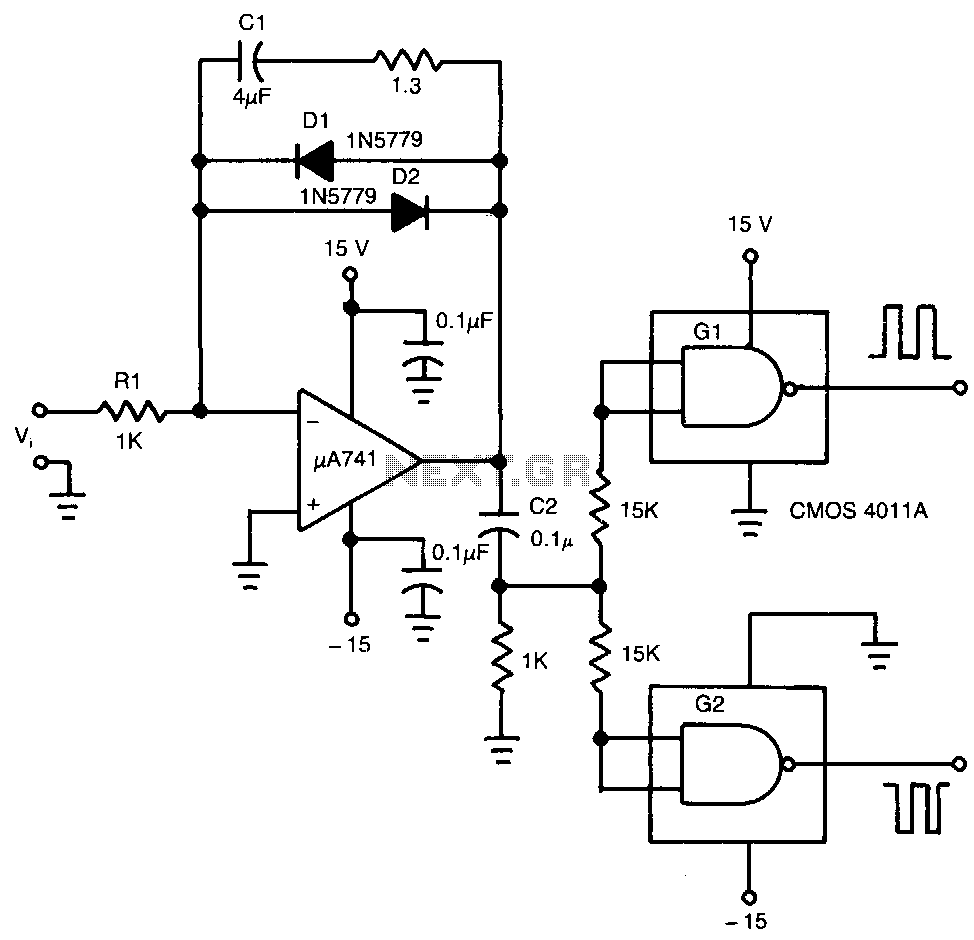
DC-10Khz frequency-voltage converter

The converter produces an output voltage that is linearly proportional to the input frequency waveform. Each zero crossing at the comparator's input results in a specific amount of charge being dispensed into the op-amp's summing junction. This charge subsequently flows through the feedback resistor, generating voltage pulses at the output of the op-amp. A capacitor (Cint) placed across the resistor (Rint) averages these pulses into a DC voltage that is linearly proportional to the input frequency.
The described converter operates by utilizing a comparator to detect zero crossings in the input frequency waveform. When the waveform crosses zero, the comparator triggers a response that releases a defined quantity of charge into the summing junction of an operational amplifier (op-amp). This mechanism ensures that the output voltage of the op-amp reflects the input frequency accurately. The feedback resistor plays a crucial role in shaping the output signal, as it determines the gain of the op-amp and thus influences the amplitude of the voltage pulses generated.
The integration of the capacitor (Cint) across the resistor (Rint) is essential for converting the pulsed output of the op-amp into a stable DC voltage. The capacitor averages the rapid voltage fluctuations caused by the pulsed output, smoothing them out to provide a continuous voltage level that corresponds linearly to the input frequency. This averaging process allows for more straightforward measurement and control in applications where a stable DC voltage is required, despite the inherent variability in the input frequency waveform.
Overall, the combination of the comparator, op-amp, feedback resistor, and capacitor forms a robust frequency-to-voltage converter, capable of translating varying frequency signals into a proportional DC voltage output. This configuration is widely applicable in various electronic systems, particularly in frequency measurement and control applications.The converter generates an output voltage which is linearly proportional to the input frequency waveform. Each zero crossing at the comparator"s input causes a precise amount of change to be dispensed into the op amp"s summing junction.
This charge in turn flows through the feedback resistor generating voltage pulses at the output of the op amp Capacitor (Cint) across Rint averages these pulses into a dc voltage which is linearly proportional to the input frequency.
The described converter operates by utilizing a comparator to detect zero crossings in the input frequency waveform. When the waveform crosses zero, the comparator triggers a response that releases a defined quantity of charge into the summing junction of an operational amplifier (op-amp). This mechanism ensures that the output voltage of the op-amp reflects the input frequency accurately. The feedback resistor plays a crucial role in shaping the output signal, as it determines the gain of the op-amp and thus influences the amplitude of the voltage pulses generated.
The integration of the capacitor (Cint) across the resistor (Rint) is essential for converting the pulsed output of the op-amp into a stable DC voltage. The capacitor averages the rapid voltage fluctuations caused by the pulsed output, smoothing them out to provide a continuous voltage level that corresponds linearly to the input frequency. This averaging process allows for more straightforward measurement and control in applications where a stable DC voltage is required, despite the inherent variability in the input frequency waveform.
Overall, the combination of the comparator, op-amp, feedback resistor, and capacitor forms a robust frequency-to-voltage converter, capable of translating varying frequency signals into a proportional DC voltage output. This configuration is widely applicable in various electronic systems, particularly in frequency measurement and control applications.The converter generates an output voltage which is linearly proportional to the input frequency waveform. Each zero crossing at the comparator"s input causes a precise amount of change to be dispensed into the op amp"s summing junction.
This charge in turn flows through the feedback resistor generating voltage pulses at the output of the op amp Capacitor (Cint) across Rint averages these pulses into a dc voltage which is linearly proportional to the input frequency.
